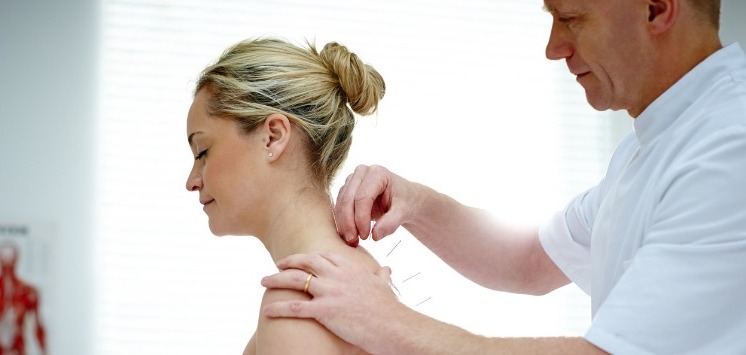
Alternative therapies have enjoyed a resurgence in recent years, as more people are interested in a holistic approach to health and wellness. Practices such as acupuncture, chiropractic care, and traditional Chinese medicine are three alternative therapies that have gained popularity. Also known as complementary medicine, the therapies are used exclusively or to complement traditional medical treatments.
Acupuncture
Acupuncture is a form of traditional Chinese medicine that involves inserting extremely thin needles into the skin at strategic points on the body. Acupuncture helps treat pain as well as stress management to improve wellness. It is designed to balance the flow of energy known as life force (chi), believed to flow through pathways in the body.
To start, needles get inserted at varying depths depending on the point of the body. Up to 20 needles can be used in a session, but fewer may be required. After inserting the needle, the practitioner may twirl it or apply mild electrical pulses to it. The needles usually stay in place for around 15 minutes, during which some people feel an aching sensation.
There are different kinds of acupuncture depending on the purpose of the treatment. Some appointments are short, while others can take up to one hour. To treat a single area or condition, one or two treatments per week are recommended for three to six continuous weeks.
People use acupuncture to treat several medical conditions including:
- Headaches
- Lower back pain
- Neck pain
- Tennis elbow
- Osteoarthritis
- Respiratory disorders
- Fibromyalgia
- Nausea and vomiting from chemotherapy
Acupuncture Benefits
Many people have been able to find pain relief with acupuncture that they haven’t been able to gain with any other forms of pain relief. Acupuncture tends to be best for people with a positive mindset and are open to alternative treatments.
Acupuncture Side Effects/Risks
The risks associated with acupuncture are considered low. Some people experience mild soreness, minor bleeding or bruising. However, acupuncture may not be suitable for people with a pacemaker, a bleeding disorder, or who are pregnant.
Always speak to your acupuncturist about any medical conditions you may have or medications you’re taking.
Understanding Chiropractic Care
The Core Philosophy of Chiropractic Care
Chiropractic care is built on the principle that the body has an innate ability to heal itself through spinal adjustments.
Misalignments, known as subluxations, can interfere with nerve signals and lead to health problems. Few people consider chiropractic care as alternative medicine because it has become mainstream. Wellness chiropractic helps reduce joint pain and improve mobility, particularly in the back and neck areas.
Wellbeing chiropractic focuses on promoting overall health and wellness by utilising specific adjustments and techniques to improve spinal alignment and nervous system function.
A chiropractor uses their hands to manipulate joints while the patient lies on a table. Working around the areas of a joint, a chiropractor helps restore joint mobility, ease muscles, alleviate pain, and foster the healing of tissue. Rapid actions can cause a popping sound due to a sudden change in the pressure of the joint space. Treatments can be done once or twice a week or only once every few weeks, depending on the purpose and patient.
Chiropractors may recommend multiple techniques as part of the treatment. The range of treatments includes:
- Electrical currents/laser
- Exercises
- Hot/cold treatment
- Massage
- Needling/acupuncture
Chiropractic Benefits
Chiropractic treatment can help with a range of ailments. Patients agree with research stating chiro practice can decrease pain and provide better mobility following treatment.
Wellbeing chiropractic helps prevent pain before it begins. This includes increasing joint mobility, strengthening muscles, reducing stress, and improving the immune system. A misaligned nervous system can lead to one part of the body compensating for a weaker part of the body which causes physical and mental stress.
Wellness chiropractic adjustment can make the body feel less tense and better able to handle stress.
Chiropractic Side Effects/Risks
After a chiropractic session, some people report pain or stiffness in their muscles, bones, and joints or a headache. These are all usually mild and don’t last longer than 24 hours. Treatment on the neck may cause dizziness, tiredness, and tingling in the arms, especially during the first sessions.
People taking steroids or blood thinning drugs or those with bone cancer, broken bones, osteoporosis, spinal cord-related diseases, and leukaemia shouldn’t have chiropractic treatment. Some chiropractors like to speak to a patient’s GP to check their medical history. There have been reports of stroke, paralysis, and brain bleeds following chiropractic neck manipulation, although these cases are very rare.
Chiropractic FAQs
Do doctors recommend chiropractors?
Depending on the condition or injury of a patient, a GP may recommend that they see a chiropractor. Some GPs may not recommend their patients see a chiropractor because of other alternatives they may prefer.
Why is there a controversy surrounding chiropractors?
Most of the controversy around chiropractors is that some practitioners treat babies and young children with spinal manipulation. In recent years the Chiropractic Board in Australia has recommended children under the age of two not be treated by chiropractors.
Are chiropractic adjustments safe?
In Australia, chiropractors have to undergo at least five years of university study to ensure they treat patients safely but like many other medical therapies, all forms of chiropractic treatment have the potential for an adverse reaction in some people.

Traditional Chinese Medicine
Traditional Chinese medicine comes from ancient Chinese practices and medicines, and is based on knowledge thousands of years old. Traditional Chinese medicine includes acupuncture, tai chi, herbal medicine, massage, and diet therapy.
Tai chi is a practice based on a mix of slow movements, breathing, meditation, and relaxation to improve balance. Chinese herbal medicine offers personalised prescriptions of more than 400 substances that are mainly plant-based. Dietary therapy aims at balancing Yin and Yang (the two energies that make life possible) through nutrition and medicine. Chinese massage involves a strong mechanical stimulation of the muscles and tissue to activate nerves.
Traditional Chinese Medicine Benefits
Many people report good outcomes from using traditional Chinese medicine, but there are few studies to verify the claims. Some of the cited benefits of Chinese medicine include eczema, dermatitis, sleep issues, boost to energy levels, managing stress, improving digestion, anti-inflammatory effects, and fertility support.
Traditional Chinese Medicine Side Effects/Risks
Some Chinese herbs are considered safe, while others need more research and testing. It’s best to discuss with your GP before consuming any herbal products to ensure it’s right for you.
How to Choose a Practitioner
Finding the right practitioner for you can be one of the most difficult parts of engaging in alternative therapies. Not all alternative practices have qualified practitioners who have had to undergo extensive formal training.
Chinese medicine practitioners are registered by the Australian Health Practitioner Regulation Agency (AHPRA) and Chinese medicines are regulated by the Therapeutic Goods Administration (TGA).
Chiropractors are also registered with the Australian Health Practitioner Regulation Agency (AHPRA), and Australian chiropractors must complete five years of university study.
To help with finding an experienced and reputable practitioner, you could use one or more of the following methods.
- Ask friends and family members for recommendations,
- Ask your GP if you are a good candidate and if they can recommend a practitioner,
- Meet with the practitioner and take a list of questions you’d like answered,
- Have a first appointment with a few practitioners and decide which one you prefer.
Join us on this journey to discover the diverse world of alternative therapies and their potential contributions to overall well-being. If you're unsure whether you can benefit from any of these therapies, it always helps to speak with a professional and give it a try. Certain extras policies will cover your visit, though you may also like to speak with us and your GP before locking it in.